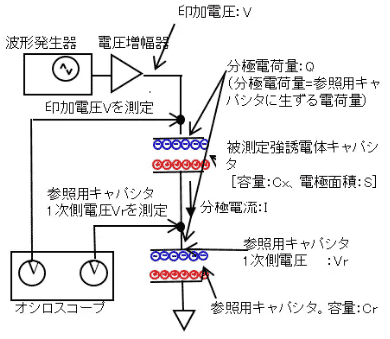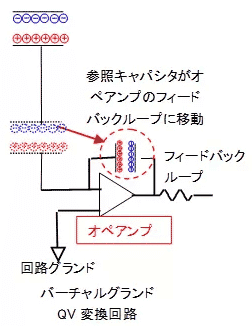FCE10 ferroelectric material test equipment
Japan Toyo Technica high frequency low noise ferroelectric evaluation system
The amount of polarization cannot be measured directly. Therefore, a delta voltage V is applied to the sample and the resulting polarization leads to a further surface charge.
Hysteresis measurements measure this surface charge. A graph of the applied voltage V on the horizontal axis and the surface charge Q on the vertical axis is plotted (QV curve). In addition, the voltage V on the horizontal axis is divided by the sample thickness d to convert it to an electric field E, and the surface charge Q on the vertical axis is divided by the electrode area S to convert it to a polarization P. (PE curve) The charge Q is measured by both the Zunguntawa method and the virtual grounding method, but for the latter reason, the virtual grounding method is more suitable for small volume and high resolution measurements.

Place the reference capacitor Cr on the secondary side (ground side) of the capacitor (sample) to be measured.
The measured value of the polarized charge Q generated in the sample is consistent with the charge Q' generated in the reference capacitor.
Q' can be calculated by measuring the primary voltage Vr of the capacitor and multiplying it by the capacitance Cr of the capacitor. From Q = Q'= CrVr, the polarized charge generated in the sample can be calculated.
This method is easy to set up and has been used for a long time, but it has the disadvantage that the voltage drop that occurs in the reference capacitor can lead to errors in the applied voltage.
For example, if a small voltage is applied (10V, etc.), the primary voltage Vr of the reference capacitor will be small, making measurements difficult.

The virtual ground QV conversion method overcomes the drawbacks of the Soya Tawa method and is the most widely used polarization measurement method. It is basically similar to the Soya Tawa measurement circuit, but the reference capacitor is placed in the feedback loop of the op-amp.
This will bring you the following improvements:
As seen above, not only large capacity but also thin/thick film samples and small capacity capacitors can be used and can be measured accurately.
Japan Toyo Technica high frequency low noise ferroelectric evaluation system